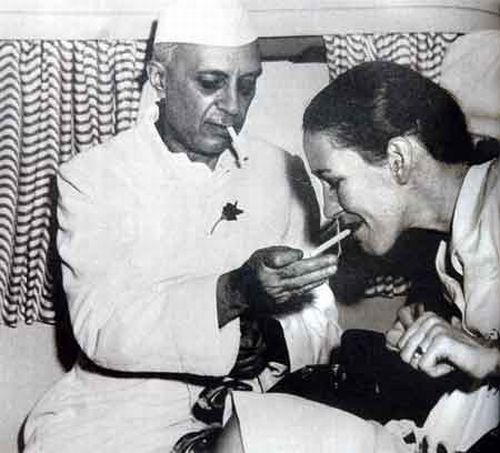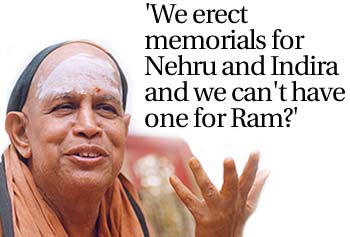 Rather than
presenting the news, Rajdeep Sardesai has very recently actually been in the
news on two rather different occasions. The first occasion was when Sardesai
got into a scuffle with some of Modi’s supporters when the Prime Minister was
in New York. In the video war that followed, Sardesai was first seen as being
beaten by the Hindu nationalist, then as having started the scuffle, and
finally as having been forced to respond violently to the nationalist’s heckling.
Regardless of the reasons for the scuffle, or its context, however, Sardesai
almost instantly became the poster boy for Indian secular liberals across the
world. Vociferous opponents of the BJP, Hindu nationalism and Modi, they
cheered Sardesai and used the episode to reflect on the rowdy ways of Hindu
nationalists.
Rather than
presenting the news, Rajdeep Sardesai has very recently actually been in the
news on two rather different occasions. The first occasion was when Sardesai
got into a scuffle with some of Modi’s supporters when the Prime Minister was
in New York. In the video war that followed, Sardesai was first seen as being
beaten by the Hindu nationalist, then as having started the scuffle, and
finally as having been forced to respond violently to the nationalist’s heckling.
Regardless of the reasons for the scuffle, or its context, however, Sardesai
almost instantly became the poster boy for Indian secular liberals across the
world. Vociferous opponents of the BJP, Hindu nationalism and Modi, they
cheered Sardesai and used the episode to reflect on the rowdy ways of Hindu
nationalists.
The second occasion, however, saw the same Rajdeep Sardesai being booed for being casteist. His sin this time round was a tweet where he confessed to “Saraswat pride” at seeing two members of his Saraswat caste being included in the prime minister’s cabinet. In response to the outrage that rained on him, Sardesai sought to explain himself in an oped in the Hindustan Times, and subsequently in the Navhind Times. This only complicated matters further, since what could have been excused as a momentary lapse was now justified rather elaborately.
How does one explain this swing from being the archetypical secular liberal to unrepentant casteist in the space of a few months? The sad truth is that all too often what Sardesai demonstrated more recently is not an uncommon feature of the Indian secular liberal.

Indian secular liberalism is based on caste and largely the ideological position of anglicised upper caste Indians. One need go no further to unearth this relationship between caste and secularism than to look at Nehru, the revered figure of Indian secularism. Often referred to as Pandit Nehru, where did this title of Pandit come from? Nehru was a graduate, but the title of Pandit came not from his graduation in Western education, nor from any knowledge of the Sanskrit texts. The title is one inherited from his caste location as a Kashmiri Pandit. Nehru may have been an unrepentant dismisser of Hindu religiosity, but that did not stop him from claiming his brahmin privilege and assume a right to leadership that supposedly came with his heritage.
Nehruvian secularism was the product not merely of one man, but a social milieu that gathered around Nehru and formed the core of the anti-imperial nationalist struggle. Referred to as the ‘nationalist class’ by Partha Chatterjee, this was a group that in some ways was secular. They were secular in the sense that they did not necessarily find their spouses within their natal caste groups, nor did they follow other traditional caste rules. They did not do so, largely because they did not have to. Theirs was an anglicised milieu and they had in fact formed a sub-caste, or jati, of their own. This was the group that controlled power in the Centre through the initial decades of Indian independence.

The fact of the matter is that group was composed of people like Pandit Nehru, anglicised segments of already dominant caste groups. The nationalist class was not averse to recruiting people and accommodating them in various governmental institutions. However, the route to this recruitment depended critically on the privileges available to dominant groups in India. This meant the ability to be educated in one of the “good” schools in India, gain a degree in Oxford, Cambridge, where one gained access to scions of these families. These options are technically open to all, and yet as is the reality of this country, were, and are available largely to privileged segments of dominant caste groups. Rajdeep Sardesai, with his dominant caste background, and his privileged education is a natural member of the nationalist class jati.

One would not appreciate how this nationalist class can be seen as a jati if one has the standard static notion of India and its culture. One has to recognise that like culture, caste is not static, but dynamic and constantly changing. Take, for example, the fact that the Gaud Saraswat caste that we today assume to be an ancient caste was in fact produced through a caste unity movement that commenced in the latter part of the nineteenth century. This caste movement gathered together various jati like Bardezkars, Bhanavlikars, Pednekars, Kudaldeshkars and Sasthikars on the one hand, and Smartha and Vaishnava sampraday on the other, to form one Gaud Saraswat caste. This movement took a good amount of effort and often ran counter to the wishes of the Swamis of the various sampraday, as well as orthodox elements within these jati.

When upper castes like Sardesai refer to themselves as progressive, they are not necessarily referring to a tradition of egalitarianism, but rather to their caste histories where some radicals reading the need of the times stop following caste laws and began to westernise themselves. As Sardesai’s tweet and subsequent article demonstrate, none of this meant that they gave up caste. What happened was that caste was now masked under a superficial veneer of westernised behaviour, like eating meat, not fulfilling brahmanical Hindu religious rituals, crossing the waters. In other words, they merely produced new rules for their caste groups.
New jati, therefore, are constantly being born, and if the Gaud Saraswat caste was born in the context of creating opportunities in colonial Bombay, the nationalist class is a jati that was formed through the process of fighting off the British. The idea of a single nation was the idea of this jati and they had to fight off rival claims from the princes and other caste groups. These latter groups were more interested in maintaining spheres of influence. While the princes were dismissed through democratic rhetoric, the dominant castes from various regions were accommodated through the process of the linguistic reorganisation of States. This process allowed for the regional hegemony of these caste groups by recognising their dialects as the official languages of the states where they dominated, while the Nehruvian elite dominated the centre with their secular talk of “unity in diversity”.
 |
| Unity in Diversity, with Hinduism on top |
The Indian nation is not an ancient primordial entity. It is a production of the Indian nationalists held together by the force of the post-colonial state of India and the logic of Hindutva. Given that the maintenance of the Indian nation was always under threat from the dominant castes of various regions, the nationalist class always existed in some tension with the regional dominant castes. As yet unfamiliar with the options that anglicisization could bring, these regional castes stuck to the regional identities that brought them power. If they cooperated together, it was because they recognised that Hindutva is what allows for dominant brahmanised castes to assert their dominance in the various Indian states. As such, as long as their assertions of caste, regional and religious identity did not challenge the integrity of the Indian state, these were always treated with some amount of condescension by the nationalist class. It was only if these regional groups got too strident in their assertions that the Indian state got nasty.
If one looks at the longer videos of Sardesai interviewing those who had come to support Modi in New York, one will recognise instantly the condescending manner in which Sardesai did not so much talk to these supporters, as much as he talked down to them. This is the condescension that the members of the nationalist class reserve for those that do not buy their version of secularism. Rather than see the assertions of caste, and religion as a way in which segments of the Indian population are trying to assert power, the secular liberal sees this as the product of dull minds who are unable to grasp the sublime truths and value of secularism. Indeed, Hindutva in its current form is the political response of the non-anglicised regional dominant castes to the secularism of the largely Hindu Nehruvian elite. Had the Nehruvian secularists been honest about the fact that their version of secularism was itself limited by their social location, that it was also a casteist project, then perhaps the project of Indian secularism would have met with greater success.
The two episodes that got Rajdeep Sardesai in the news are not antithetical to each other. In fact, they are but two sides of the same coin.
(A Version of this post was first published in the O Herald on 2 Dec 2014)


No comments:
Post a Comment